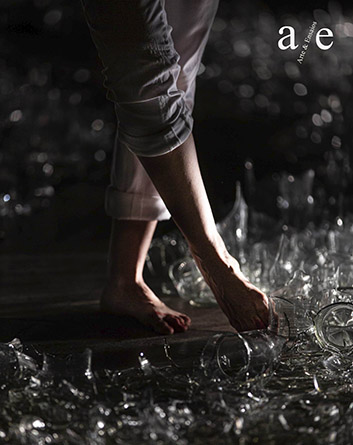What’s left of the Shoah? A history of ruins and memories in Agamben, Lanzmann, Philipsz and Haacke
DOI:
https://doi.org/10.37235/ae.n44.12Keywords:
History, Memory, Catastrophe, Shoah, Giorgio AgambenAbstract
This article brings to the surface considerations about the fact that natural life, at the heart of the modern State, came to be linked and governed by the notions of the political, and that this politics took power from the human. Thus, we intertwine the Agambenian concepts present in his Homo Sacer III. Remnants of Auschwitz: the witness and the archive (1998) to the following productions: the 11-year long research of French filmmaker Claude Lanzmann and his film Shoah (1985); the sound installation Study for Strings (2012), by Susan Philipsz, for Documenta 13; and Hans Haacke’s installation Germania (1993) for the German Pavilion at the Venice Biennale, whose form weaves dialogues with reminiscences of the Third Reich. We also extend the reflections on biopolitics, relating this issue to the social occupation of being (bios) in the city (polis).Downloads
Download data is not yet available.
Downloads
Published
2023-01-09
Issue
Section
Artigos
License
Autores que publicam nesta revista concordam com os seguintes termos:- Autores mantém os direitos autorais e concedem à revista o direito de primeira publicação, com o trabalho simultaneamente licenciado sob a Licença Creative Commons Attribution que permite o compartilhamento do trabalho com reconhecimento da autoria e publicação inicial nesta revista.
- Autores têm autorização para assumir contratos adicionais separadamente, para distribuição não-exclusiva da versão do trabalho publicada nesta revista (ex.: publicar em repositório institucional ou como capítulo de livro), com reconhecimento de autoria e publicação inicial nesta revista.
- Autores têm permissão e são estimulados a publicar e distribuir seu trabalho online (ex.: em repositórios institucionais ou na sua página pessoal) a qualquer ponto antes ou durante o processo editorial, já que isso pode gerar alterações produtivas, bem como aumentar o impacto e a citação do trabalho publicado (Veja O Efeito do Acesso Livre).


